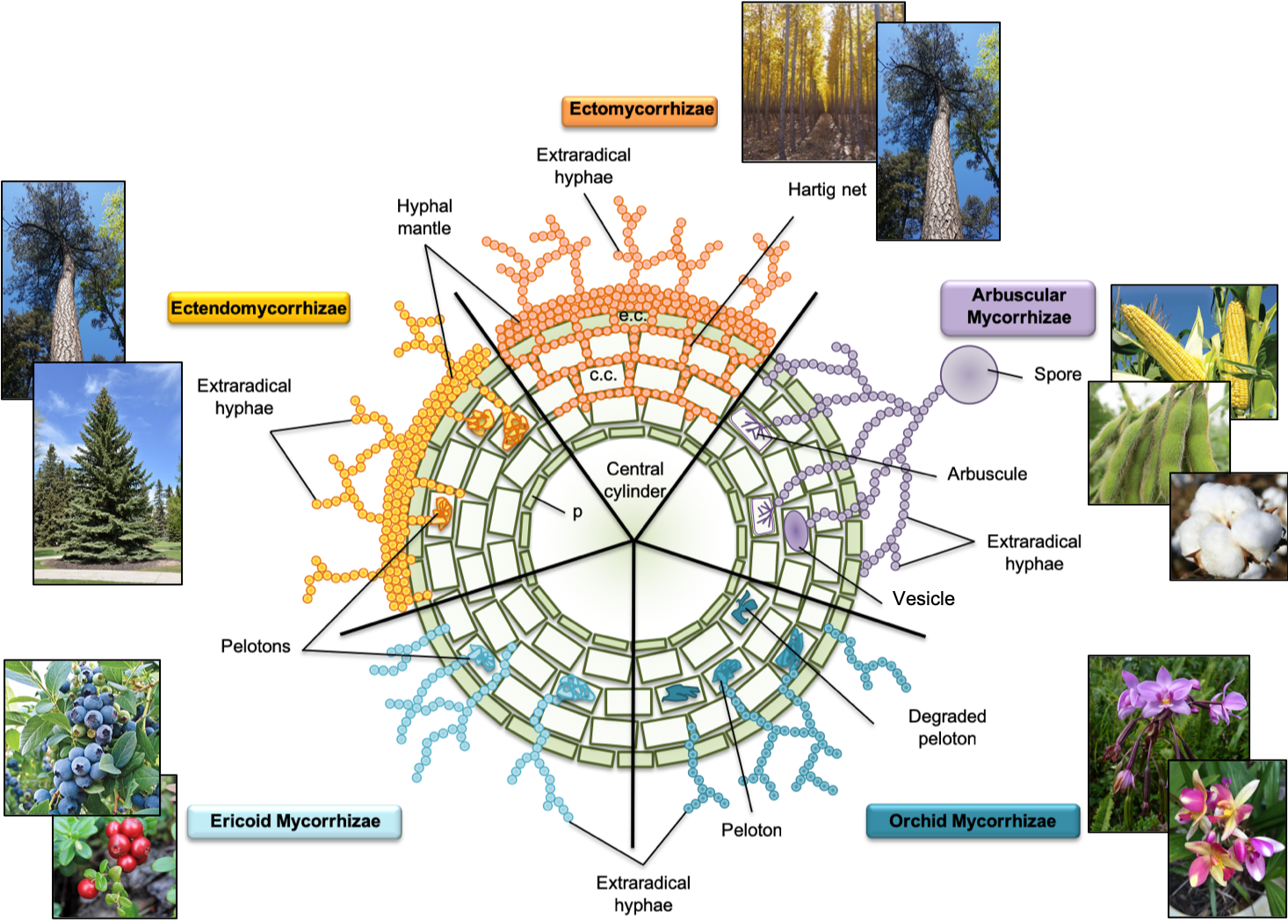Fungi constitute a vital Kingdom of life that plays multifaceted roles in ecosystems, particularly in agriculture. They can be broadly classified into beneficial and harmful types, influencing soil health, plant growth, and crop productivity. This discourse elucidates the diverse types of fungi that affect agricultural crops and their multifarious implications.
Mycorrhizal Fungi: The Unsung Heroes of Agriculture
Mycorrhizal fungi form symbiotic relationships with plant roots, facilitating nutrient uptake, particularly phosphorus. There are two principal types of mycorrhizae: arbuscular mycorrhizae (AM) and ectomycorrhizae (EM).
Arbuscular mycorrhizae (AM) are the most prevalent type, establishing endophytic connections within plant roots. They penetrate the cortical cells of roots, forming arbuscules, which are sites of nutrient exchange. Crops such as maize, wheat, and various legumes significantly benefit from AM associations, exhibiting enhanced growth and resilience against biotic and abiotic stressors. This symbiosis augments the plants’ ability to absorb water and key nutrients, leading to increased yields.
Ectomycorrhizae (EM), on the other hand, form a protective sheath around the roots and enhance the plants’ access to nitrogen. While typically associated with woody plants and trees, their impact on agricultural practices cannot be overlooked, especially in agroforestry systems. The interaction between the plant and EM fungi can lead to improved soil structure and microbial biodiversity, initiating positive feedback loops that support crop health.
Pathogenic Fungi: The Adversaries of Crop Production
Contrasting mycorrhizal fungi, pathogenic fungi pose threats to crop health, leading to significant agricultural losses annually. These pathogens may cause diseases that manifest as blights, molds, rots, and wilts.
Among the most notorious is Fusarium, a genus responsible for pre- and post-harvest diseases, particularly in cereals and legumes. Species such as Fusarium graminearum cause Fusarium head blight (FHB), resulting in yield losses and mycotoxin contamination, which can have severe implications for food safety. Management strategies for Fusarium typically involve the integration of resistant cultivars, crop rotation, and the application of fungicides.
Another critical pathogen is Phytophthora, known for its devastating effects on crops like potatoes and tomatoes. The infamous late blight, caused by Phytophthora infestans, led to the Irish famine of the 19th century. This soil-borne pathogen thrives in wet conditions and can spread through oospores, making its management challenging. Integrated pest management (IPM) strategies focusing on crop diversity, resistant varieties, and fungicidal applications are crucial in combating this pathogen.
Rust Fungi: The Silent Destroyers
Rust fungi represent another group of significant plant pathogens affecting a variety of crops, particularly cereals. The obligate biotrophs belonging to the genus Puccinia can cause widespread devastation in wheat, barley, and oats. The lifecycle of these pathogens often includes multiple hosts, complicating disease management.
Wheat rust diseases, such as stem rust caused by Puccinia graminis, can decimate yields in susceptible cultivars, creating food security concerns. The implementation of resistant varieties and monitoring programs are essential practices in the fight against rust diseases. Genetic studies have shown promise in introducing durable resistance through traditional breeding and biotechnology.
The Role of Endophytes: Beneficial Fungi within Plants
While many fungi are harmful, endophytic fungi, which reside within plant tissues without causing disease, also have significant agricultural implications. These fungi can enhance plant stress tolerance, growth, and overall health. For instance, species of Neotyphodium are known to produce alkaloids that can deter herbivory while improving the host’s nutrient uptake.
Endophytes can also confer resistance to pathogens, acting as a biological control mechanism. Research is ongoing into the potential of utilizing fungal endophytes in agricultural practices, especially as a method of reducing reliance on chemical fungicides. Their ability to synthesize secondary metabolites can play a pivotal role in plant defense mechanisms.
Fungal Bioremediation: Addressing Soil Pollution
An emerging area of interest in agricultural mycology is the potential of fungi in bioremediation. Certain fungi possess the ability to degrade environmental pollutants, such as heavy metals and organic contaminants, improving soil health and crop productivity. White rot fungi, such as Phanerochaete chrysosporium, have been studied for their capacity to degrade lignin and associated toxic compounds.
Utilizing fungi in bioremediation practices can also lead to healthier soils, promoting the growth of crops and restoring habitats. This approach aligns with sustainable agricultural practices, addressing issues of soil degradation and contamination.
The Future of Fungal Research in Agriculture
Understanding the complex relationships between fungi and crops is vital for advancing agricultural practices. The advent of molecular techniques and genomic studies allows researchers to uncover the mysteries of fungal interactions with plants, paving the way for innovative solutions in crop management.
For example, advances in mycology and plant pathology may lead to the development of biopesticides derived from beneficial fungi to combat plant pathogens. Furthermore, breeding strategies that enhance mycorrhizal associations could yield more resilient crop varieties equipped to withstand environmental stresses.
The integration of fungi into sustainable agricultural systems promises numerous benefits. By supplementing traditional practices with a deeper understanding of fungal ecology, farmers can enhance productivity while promoting ecosystem health.
Conclusion: Embracing Fungal Diversity in Agriculture
The vast and varied world of fungi presents both challenges and opportunities for agriculture. While pathogenic fungi threaten crop yields, beneficial fungi offer solutions for enhancing plant health and productivity. A holistic understanding of these organisms is paramount in addressing the evolving challenges of global food security. As research continues to elucidate the complexities of fungal relationships with crops, the potential for integrating fungi into sustainable agricultural practices will only expand, fostering a brighter agricultural future.
